- Google Slides Presentation Design
- Pitch Deck Design
- Powerpoint Redesign
- Other Design Services

- Guide & How to's

How to present a research paper in PPT: best practices
A research paper presentation is frequently used at conferences and other events where you have a chance to share the results of your research and receive feedback from colleagues. Although it may appear as simple as summarizing the findings, successful examples of research paper presentations show that there is a little bit more to it.
In this article, we’ll walk you through the basic outline and steps to create a good research paper presentation. We’ll also explain what to include and what not to include in your presentation of research paper and share some of the most effective tips you can use to take your slides to the next level.
Research paper PowerPoint presentation outline
Creating a PowerPoint presentation for a research paper involves organizing and summarizing your key findings, methodology, and conclusions in a way that encourages your audience to interact with your work and share their interest in it with others. Here’s a basic research paper outline PowerPoint you can follow:
1. Title (1 slide)
Typically, your title slide should contain the following information:
- Title of the research paper
- Affiliation or institution
- Date of presentation
2. Introduction (1-3 slides)
On this slide of your presentation, briefly introduce the research topic and its significance and state the research question or objective.
3. Research questions or hypothesis (1 slide)
This slide should emphasize the objectives of your research or present the hypothesis.
4. Literature review (1 slide)
Your literature review has to provide context for your research by summarizing relevant literature. Additionally, it should highlight gaps or areas where your research contributes.
5. Methodology and data collection (1-2 slides)
This slide of your research paper PowerPoint has to explain the research design, methods, and procedures. It must also Include details about participants, materials, and data collection and emphasize special equipment you have used in your work.
6. Results (3-5 slides)
On this slide, you must present the results of your data analysis and discuss any trends, patterns, or significant findings. Moreover, you should use charts, graphs, and tables to illustrate data and highlight something novel in your results (if applicable).
7. Conclusion (1 slide)
Your conclusion slide has to summarize the main findings and their implications, as well as discuss the broader impact of your research. Usually, a single statement is enough.
8. Recommendations (1 slide)
If applicable, provide recommendations for future research or actions on this slide.
9. References (1-2 slides)
The references slide is where you list all the sources cited in your research paper.
10. Acknowledgments (1 slide)
On this presentation slide, acknowledge any individuals, organizations, or funding sources that contributed to your research.
11. Appendix (1 slide)
If applicable, include any supplementary materials, such as additional data or detailed charts, in your appendix slide.
The above outline is just a general guideline, so make sure to adjust it based on your specific research paper and the time allotted for the presentation.
Steps to creating a memorable research paper presentation
Creating a PowerPoint presentation for a research paper involves several critical steps needed to convey your findings and engage your audience effectively, and these steps are as follows:
Step 1. Understand your audience:
- Identify the audience for your presentation.
- Tailor your content and level of detail to match the audience’s background and knowledge.
Step 2. Define your key messages:
- Clearly articulate the main messages or findings of your research.
- Identify the key points you want your audience to remember.
Step 3. Design your research paper PPT presentation:
- Use a clean and professional design that complements your research topic.
- Choose readable fonts, consistent formatting, and a limited color palette.
- Opt for PowerPoint presentation services if slide design is not your strong side.
Step 4. Put content on slides:
- Follow the outline above to structure your presentation effectively; include key sections and topics.
- Organize your content logically, following the flow of your research paper.
Step 5. Final check:
- Proofread your slides for typos, errors, and inconsistencies.
- Ensure all visuals are clear, high-quality, and properly labeled.
Step 6. Save and share:
- Save your presentation and ensure compatibility with the equipment you’ll be using.
- If necessary, share a copy of your presentation with the audience.
By following these steps, you can create a well-organized and visually appealing research paper presentation PowerPoint that effectively conveys your research findings to the audience.
What to include and what not to include in your presentation
In addition to the must-know PowerPoint presentation recommendations, which we’ll cover later in this article, consider the following do’s and don’ts when you’re putting together your research paper presentation:
- Focus on the topic.
- Be brief and to the point.
- Attract the audience’s attention and highlight interesting details.
- Use only relevant visuals (maps, charts, pictures, graphs, etc.).
- Use numbers and bullet points to structure the content.
- Make clear statements regarding the essence and results of your research.
Don’ts:
- Don’t write down the whole outline of your paper and nothing else.
- Don’t put long, full sentences on your slides; split them into smaller ones.
- Don’t use distracting patterns, colors, pictures, and other visuals on your slides; the simpler, the better.
- Don’t use too complicated graphs or charts; only the ones that are easy to understand.
- Now that we’ve discussed the basics, let’s move on to the top tips for making a powerful presentation of your research paper.
8 tips on how to make research paper presentation that achieves its goals
You’ve probably been to a presentation where the presenter reads word for word from their PowerPoint outline. Or where the presentation is cluttered, chaotic, or contains too much data. The simple tips below will help you summarize a 10 to 15-page paper for a 15 to 20-minute talk and succeed, so read on!
Tip #1: Less is more
You want to provide enough information to make your audience want to know more. Including details but not too many and avoiding technical jargon, formulas, and long sentences are always good ways to achieve this.
Tip #2: Be professional
Avoid using too many colors, font changes, distracting backgrounds, animations, etc. Bullet points with a few words to highlight the important information are preferable to lengthy paragraphs. Additionally, include slide numbers on all PowerPoint slides except for the title slide, and make sure it is followed by a table of contents, offering a brief overview of the entire research paper.
Tip #3: Strive for balance
PowerPoint slides have limited space, so use it carefully. Typically, one to two points per slide or 5 lines for 5 words in a sentence are enough to present your ideas.
Tip #4: Use proper fonts and text size
The font you use should be easy to read and consistent throughout the slides. You can go with Arial, Times New Roman, Calibri, or a combination of these three. An ideal text size is 32 points, while a heading size is 44.
Tip #5: Concentrate on the visual side
A PowerPoint presentation is one of the best tools for presenting information visually. Use graphs instead of tables and topic-relevant illustrations instead of walls of text. Keep your visuals as clean and professional as the content of your presentation.
Tip #6: Practice your delivery
Always go through your presentation when you’re done to ensure a smooth and confident delivery and time yourself to stay within the allotted limit.
Tip #7: Get ready for questions
Anticipate potential questions from your audience and prepare thoughtful responses. Also, be ready to engage in discussions about your research.
Tip #8: Don’t be afraid to utilize professional help
If the mere thought of designing a presentation overwhelms you or you’re pressed for time, consider leveraging professional PowerPoint redesign services . A dedicated design team can transform your content or old presentation into effective slides, ensuring your message is communicated clearly and captivates your audience. This way, you can focus on refining your delivery and preparing for the presentation.
Lastly, remember that even experienced presenters get nervous before delivering research paper PowerPoint presentations in front of the audience. You cannot know everything; some things can be beyond your control, which is completely fine. You are at the event not only to share what you know but also to learn from others. So, no matter what, dress appropriately, look straight into the audience’s eyes, try to speak and move naturally, present your information enthusiastically, and have fun!
If you need help with slide design, get in touch with our dedicated design team and let qualified professionals turn your research findings into a visually appealing, polished presentation that leaves a lasting impression on your audience. Our experienced designers specialize in creating engaging layouts, incorporating compelling graphics, and ensuring a cohesive visual narrative that complements content on any subject.
#ezw_tco-2 .ez-toc-widget-container ul.ez-toc-list li.active::before { background-color: #ededed; } Table of contents
- Presenting techniques
- 50 tips on how to improve PowerPoint presentations in 2022-2023 [Updated]
- Keynote VS PowerPoint
- Types of presentations
- Present financial information visually in PowerPoint to drive results

- Design Tips
8 rules of effective presentation

- Business Slides
Employee training and onboarding presentation: why and how

How to structure, design, write, and finally present executive summary presentation?

- Publication Recognition
How to Make a PowerPoint Presentation of Your Research Paper
- 4 minute read
- 121.9K views
Table of Contents
A research paper presentation is often used at conferences and in other settings where you have an opportunity to share your research, and get feedback from your colleagues. Although it may seem as simple as summarizing your research and sharing your knowledge, successful research paper PowerPoint presentation examples show us that there’s a little bit more than that involved.
In this article, we’ll highlight how to make a PowerPoint presentation from a research paper, and what to include (as well as what NOT to include). We’ll also touch on how to present a research paper at a conference.
Purpose of a Research Paper Presentation
The purpose of presenting your paper at a conference or forum is different from the purpose of conducting your research and writing up your paper. In this setting, you want to highlight your work instead of including every detail of your research. Likewise, a presentation is an excellent opportunity to get direct feedback from your colleagues in the field. But, perhaps the main reason for presenting your research is to spark interest in your work, and entice the audience to read your research paper.
So, yes, your presentation should summarize your work, but it needs to do so in a way that encourages your audience to seek out your work, and share their interest in your work with others. It’s not enough just to present your research dryly, to get information out there. More important is to encourage engagement with you, your research, and your work.
Tips for Creating Your Research Paper Presentation
In addition to basic PowerPoint presentation recommendations, which we’ll cover later in this article, think about the following when you’re putting together your research paper presentation:
- Know your audience : First and foremost, who are you presenting to? Students? Experts in your field? Potential funders? Non-experts? The truth is that your audience will probably have a bit of a mix of all of the above. So, make sure you keep that in mind as you prepare your presentation.
Know more about: Discover the Target Audience .
- Your audience is human : In other words, they may be tired, they might be wondering why they’re there, and they will, at some point, be tuning out. So, take steps to help them stay interested in your presentation. You can do that by utilizing effective visuals, summarize your conclusions early, and keep your research easy to understand.
- Running outline : It’s not IF your audience will drift off, or get lost…it’s WHEN. Keep a running outline, either within the presentation or via a handout. Use visual and verbal clues to highlight where you are in the presentation.
- Where does your research fit in? You should know of work related to your research, but you don’t have to cite every example. In addition, keep references in your presentation to the end, or in the handout. Your audience is there to hear about your work.
- Plan B : Anticipate possible questions for your presentation, and prepare slides that answer those specific questions in more detail, but have them at the END of your presentation. You can then jump to them, IF needed.
What Makes a PowerPoint Presentation Effective?
You’ve probably attended a presentation where the presenter reads off of their PowerPoint outline, word for word. Or where the presentation is busy, disorganized, or includes too much information. Here are some simple tips for creating an effective PowerPoint Presentation.
- Less is more: You want to give enough information to make your audience want to read your paper. So include details, but not too many, and avoid too many formulas and technical jargon.
- Clean and professional : Avoid excessive colors, distracting backgrounds, font changes, animations, and too many words. Instead of whole paragraphs, bullet points with just a few words to summarize and highlight are best.
- Know your real-estate : Each slide has a limited amount of space. Use it wisely. Typically one, no more than two points per slide. Balance each slide visually. Utilize illustrations when needed; not extraneously.
- Keep things visual : Remember, a PowerPoint presentation is a powerful tool to present things visually. Use visual graphs over tables and scientific illustrations over long text. Keep your visuals clean and professional, just like any text you include in your presentation.
Know more about our Scientific Illustrations Services .
Another key to an effective presentation is to practice, practice, and then practice some more. When you’re done with your PowerPoint, go through it with friends and colleagues to see if you need to add (or delete excessive) information. Double and triple check for typos and errors. Know the presentation inside and out, so when you’re in front of your audience, you’ll feel confident and comfortable.
How to Present a Research Paper
If your PowerPoint presentation is solid, and you’ve practiced your presentation, that’s half the battle. Follow the basic advice to keep your audience engaged and interested by making eye contact, encouraging questions, and presenting your information with enthusiasm.
We encourage you to read our articles on how to present a scientific journal article and tips on giving good scientific presentations .
Language Editing Plus
Improve the flow and writing of your research paper with Language Editing Plus. This service includes unlimited editing, manuscript formatting for the journal of your choice, reference check and even a customized cover letter. Learn more here , and get started today!

- Manuscript Preparation
Know How to Structure Your PhD Thesis

- Research Process
Systematic Literature Review or Literature Review?
You may also like.

What is a Good H-index?

What is a Corresponding Author?

How to Submit a Paper for Publication in a Journal
Input your search keywords and press Enter.
Reference management. Clean and simple.
How to make a scientific presentation

Scientific presentation outlines
Questions to ask yourself before you write your talk, 1. how much time do you have, 2. who will you speak to, 3. what do you want the audience to learn from your talk, step 1: outline your presentation, step 2: plan your presentation slides, step 3: make the presentation slides, slide design, text elements, animations and transitions, step 4: practice your presentation, final thoughts, frequently asked questions about preparing scientific presentations, related articles.
A good scientific presentation achieves three things: you communicate the science clearly, your research leaves a lasting impression on your audience, and you enhance your reputation as a scientist.
But, what is the best way to prepare for a scientific presentation? How do you start writing a talk? What details do you include, and what do you leave out?
It’s tempting to launch into making lots of slides. But, starting with the slides can mean you neglect the narrative of your presentation, resulting in an overly detailed, boring talk.
The key to making an engaging scientific presentation is to prepare the narrative of your talk before beginning to construct your presentation slides. Planning your talk will ensure that you tell a clear, compelling scientific story that will engage the audience.
In this guide, you’ll find everything you need to know to make a good oral scientific presentation, including:
- The different types of oral scientific presentations and how they are delivered;
- How to outline a scientific presentation;
- How to make slides for a scientific presentation.
Our advice results from delving into the literature on writing scientific talks and from our own experiences as scientists in giving and listening to presentations. We provide tips and best practices for giving scientific talks in a separate post.
There are two main types of scientific talks:
- Your talk focuses on a single study . Typically, you tell the story of a single scientific paper. This format is common for short talks at contributed sessions in conferences.
- Your talk describes multiple studies. You tell the story of multiple scientific papers. It is crucial to have a theme that unites the studies, for example, an overarching question or problem statement, with each study representing specific but different variations of the same theme. Typically, PhD defenses, invited seminars, lectures, or talks for a prospective employer (i.e., “job talks”) fall into this category.
➡️ Learn how to prepare an excellent thesis defense
The length of time you are allotted for your talk will determine whether you will discuss a single study or multiple studies, and which details to include in your story.
The background and interests of your audience will determine the narrative direction of your talk, and what devices you will use to get their attention. Will you be speaking to people specializing in your field, or will the audience also contain people from disciplines other than your own? To reach non-specialists, you will need to discuss the broader implications of your study outside your field.
The needs of the audience will also determine what technical details you will include, and the language you will use. For example, an undergraduate audience will have different needs than an audience of seasoned academics. Students will require a more comprehensive overview of background information and explanations of jargon but will need less technical methodological details.
Your goal is to speak to the majority. But, make your talk accessible to the least knowledgeable person in the room.
This is called the thesis statement, or simply the “take-home message”. Having listened to your talk, what message do you want the audience to take away from your presentation? Describe the main idea in one or two sentences. You want this theme to be present throughout your presentation. Again, the thesis statement will depend on the audience and the type of talk you are giving.
Your thesis statement will drive the narrative for your talk. By deciding the take-home message you want to convince the audience of as a result of listening to your talk, you decide how the story of your talk will flow and how you will navigate its twists and turns. The thesis statement tells you the results you need to show, which subsequently tells you the methods or studies you need to describe, which decides the angle you take in your introduction.
➡️ Learn how to write a thesis statement
The goal of your talk is that the audience leaves afterward with a clear understanding of the key take-away message of your research. To achieve that goal, you need to tell a coherent, logical story that conveys your thesis statement throughout the presentation. You can tell your story through careful preparation of your talk.
Preparation of a scientific presentation involves three separate stages: outlining the scientific narrative, preparing slides, and practicing your delivery. Making the slides of your talk without first planning what you are going to say is inefficient.
Here, we provide a 4 step guide to writing your scientific presentation:
- Outline your presentation
- Plan your presentation slides
- Make the presentation slides
- Practice your presentation

Writing an outline helps you consider the key pieces of your talk and how they fit together from the beginning, preventing you from forgetting any important details. It also means you avoid changing the order of your slides multiple times, saving you time.
Plan your talk as discrete sections. In the table below, we describe the sections for a single study talk vs. a talk discussing multiple studies:
The following tips apply when writing the outline of a single study talk. You can easily adapt this framework if you are writing a talk discussing multiple studies.
Introduction: Writing the introduction can be the hardest part of writing a talk. And when giving it, it’s the point where you might be at your most nervous. But preparing a good, concise introduction will settle your nerves.
The introduction tells the audience the story of why you studied your topic. A good introduction succinctly achieves four things, in the following order.
- It gives a broad perspective on the problem or topic for people in the audience who may be outside your discipline (i.e., it explains the big-picture problem motivating your study).
- It describes why you did the study, and why the audience should care.
- It gives a brief indication of how your study addressed the problem and provides the necessary background information that the audience needs to understand your work.
- It indicates what the audience will learn from the talk, and prepares them for what will come next.
A good introduction not only gives the big picture and motivations behind your study but also concisely sets the stage for what the audience will learn from the talk (e.g., the questions your work answers, and/or the hypotheses that your work tests). The end of the introduction will lead to a natural transition to the methods.
Give a broad perspective on the problem. The easiest way to start with the big picture is to think of a hook for the first slide of your presentation. A hook is an opening that gets the audience’s attention and gets them interested in your story. In science, this might take the form of a why, or a how question, or it could be a statement about a major problem or open question in your field. Other examples of hooks include quotes, short anecdotes, or interesting statistics.
Why should the audience care? Next, decide on the angle you are going to take on your hook that links to the thesis of your talk. In other words, you need to set the context, i.e., explain why the audience should care. For example, you may introduce an observation from nature, a pattern in experimental data, or a theory that you want to test. The audience must understand your motivations for the study.
Supplementary details. Once you have established the hook and angle, you need to include supplementary details to support them. For example, you might state your hypothesis. Then go into previous work and the current state of knowledge. Include citations of these studies. If you need to introduce some technical methodological details, theory, or jargon, do it here.
Conclude your introduction. The motivation for the work and background information should set the stage for the conclusion of the introduction, where you describe the goals of your study, and any hypotheses or predictions. Let the audience know what they are going to learn.
Methods: The audience will use your description of the methods to assess the approach you took in your study and to decide whether your findings are credible. Tell the story of your methods in chronological order. Use visuals to describe your methods as much as possible. If you have equations, make sure to take the time to explain them. Decide what methods to include and how you will show them. You need enough detail so that your audience will understand what you did and therefore can evaluate your approach, but avoid including superfluous details that do not support your main idea. You want to avoid the common mistake of including too much data, as the audience can read the paper(s) later.
Results: This is the evidence you present for your thesis. The audience will use the results to evaluate the support for your main idea. Choose the most important and interesting results—those that support your thesis. You don’t need to present all the results from your study (indeed, you most likely won’t have time to present them all). Break down complex results into digestible pieces, e.g., comparisons over multiple slides (more tips in the next section).
Summary: Summarize your main findings. Displaying your main findings through visuals can be effective. Emphasize the new contributions to scientific knowledge that your work makes.
Conclusion: Complete the circle by relating your conclusions to the big picture topic in your introduction—and your hook, if possible. It’s important to describe any alternative explanations for your findings. You might also speculate on future directions arising from your research. The slides that comprise your conclusion do not need to state “conclusion”. Rather, the concluding slide title should be a declarative sentence linking back to the big picture problem and your main idea.
It’s important to end well by planning a strong closure to your talk, after which you will thank the audience. Your closing statement should relate to your thesis, perhaps by stating it differently or memorably. Avoid ending awkwardly by memorizing your closing sentence.
By now, you have an outline of the story of your talk, which you can use to plan your slides. Your slides should complement and enhance what you will say. Use the following steps to prepare your slides.
- Write the slide titles to match your talk outline. These should be clear and informative declarative sentences that succinctly give the main idea of the slide (e.g., don’t use “Methods” as a slide title). Have one major idea per slide. In a YouTube talk on designing effective slides , researcher Michael Alley shows examples of instructive slide titles.
- Decide how you will convey the main idea of the slide (e.g., what figures, photographs, equations, statistics, references, or other elements you will need). The body of the slide should support the slide’s main idea.
- Under each slide title, outline what you want to say, in bullet points.
In sum, for each slide, prepare a title that summarizes its major idea, a list of visual elements, and a summary of the points you will make. Ensure each slide connects to your thesis. If it doesn’t, then you don’t need the slide.
Slides for scientific presentations have three major components: text (including labels and legends), graphics, and equations. Here, we give tips on how to present each of these components.
- Have an informative title slide. Include the names of all coauthors and their affiliations. Include an attractive image relating to your study.
- Make the foreground content of your slides “pop” by using an appropriate background. Slides that have white backgrounds with black text work well for small rooms, whereas slides with black backgrounds and white text are suitable for large rooms.
- The layout of your slides should be simple. Pay attention to how and where you lay the visual and text elements on each slide. It’s tempting to cram information, but you need lots of empty space. Retain space at the sides and bottom of your slides.
- Use sans serif fonts with a font size of at least 20 for text, and up to 40 for slide titles. Citations can be in 14 font and should be included at the bottom of the slide.
- Use bold or italics to emphasize words, not underlines or caps. Keep these effects to a minimum.
- Use concise text . You don’t need full sentences. Convey the essence of your message in as few words as possible. Write down what you’d like to say, and then shorten it for the slide. Remove unnecessary filler words.
- Text blocks should be limited to two lines. This will prevent you from crowding too much information on the slide.
- Include names of technical terms in your talk slides, especially if they are not familiar to everyone in the audience.
- Proofread your slides. Typos and grammatical errors are distracting for your audience.
- Include citations for the hypotheses or observations of other scientists.
- Good figures and graphics are essential to sustain audience interest. Use graphics and photographs to show the experiment or study system in action and to explain abstract concepts.
- Don’t use figures straight from your paper as they may be too detailed for your talk, and details like axes may be too small. Make new versions if necessary. Make them large enough to be visible from the back of the room.
- Use graphs to show your results, not tables. Tables are difficult for your audience to digest! If you must present a table, keep it simple.
- Label the axes of graphs and indicate the units. Label important components of graphics and photographs and include captions. Include sources for graphics that are not your own.
- Explain all the elements of a graph. This includes the axes, what the colors and markers mean, and patterns in the data.
- Use colors in figures and text in a meaningful, not random, way. For example, contrasting colors can be effective for pointing out comparisons and/or differences. Don’t use neon colors or pastels.
- Use thick lines in figures, and use color to create contrasts in the figures you present. Don’t use red/green or red/blue combinations, as color-blind audience members can’t distinguish between them.
- Arrows or circles can be effective for drawing attention to key details in graphs and equations. Add some text annotations along with them.
- Write your summary and conclusion slides using graphics, rather than showing a slide with a list of bullet points. Showing some of your results again can be helpful to remind the audience of your message.
- If your talk has equations, take time to explain them. Include text boxes to explain variables and mathematical terms, and put them under each term in the equation.
- Combine equations with a graphic that shows the scientific principle, or include a diagram of the mathematical model.
- Use animations judiciously. They are helpful to reveal complex ideas gradually, for example, if you need to make a comparison or contrast or to build a complicated argument or figure. For lists, reveal one bullet point at a time. New ideas appearing sequentially will help your audience follow your logic.
- Slide transitions should be simple. Silly ones distract from your message.
- Decide how you will make the transition as you move from one section of your talk to the next. For example, if you spend time talking through details, provide a summary afterward, especially in a long talk. Another common tactic is to have a “home slide” that you return to multiple times during the talk that reinforces your main idea or message. In her YouTube talk on designing effective scientific presentations , Stanford biologist Susan McConnell suggests using the approach of home slides to build a cohesive narrative.
To deliver a polished presentation, it is essential to practice it. Here are some tips.
- For your first run-through, practice alone. Pay attention to your narrative. Does your story flow naturally? Do you know how you will start and end? Are there any awkward transitions? Do animations help you tell your story? Do your slides help to convey what you are saying or are they missing components?
- Next, practice in front of your advisor, and/or your peers (e.g., your lab group). Ask someone to time your talk. Take note of their feedback and the questions that they ask you (you might be asked similar questions during your real talk).
- Edit your talk, taking into account the feedback you’ve received. Eliminate superfluous slides that don’t contribute to your takeaway message.
- Practice as many times as needed to memorize the order of your slides and the key transition points of your talk. However, don’t try to learn your talk word for word. Instead, memorize opening and closing statements, and sentences at key junctures in the presentation. Your presentation should resemble a serious but spontaneous conversation with the audience.
- Practicing multiple times also helps you hone the delivery of your talk. While rehearsing, pay attention to your vocal intonations and speed. Make sure to take pauses while you speak, and make eye contact with your imaginary audience.
- Make sure your talk finishes within the allotted time, and remember to leave time for questions. Conferences are particularly strict on run time.
- Anticipate questions and challenges from the audience, and clarify ambiguities within your slides and/or speech in response.
- If you anticipate that you could be asked questions about details but you don’t have time to include them, or they detract from the main message of your talk, you can prepare slides that address these questions and place them after the final slide of your talk.
➡️ More tips for giving scientific presentations
An organized presentation with a clear narrative will help you communicate your ideas effectively, which is essential for engaging your audience and conveying the importance of your work. Taking time to plan and outline your scientific presentation before writing the slides will help you manage your nerves and feel more confident during the presentation, which will improve your overall performance.
A good scientific presentation has an engaging scientific narrative with a memorable take-home message. It has clear, informative slides that enhance what the speaker says. You need to practice your talk many times to ensure you deliver a polished presentation.
First, consider who will attend your presentation, and what you want the audience to learn about your research. Tailor your content to their level of knowledge and interests. Second, create an outline for your presentation, including the key points you want to make and the evidence you will use to support those points. Finally, practice your presentation several times to ensure that it flows smoothly and that you are comfortable with the material.
Prepare an opening that immediately gets the audience’s attention. A common device is a why or a how question, or a statement of a major open problem in your field, but you could also start with a quote, interesting statistic, or case study from your field.
Scientific presentations typically either focus on a single study (e.g., a 15-minute conference presentation) or tell the story of multiple studies (e.g., a PhD defense or 50-minute conference keynote talk). For a single study talk, the structure follows the scientific paper format: Introduction, Methods, Results, Summary, and Conclusion, whereas the format of a talk discussing multiple studies is more complex, but a theme unifies the studies.
Ensure you have one major idea per slide, and convey that idea clearly (through images, equations, statistics, citations, video, etc.). The slide should include a title that summarizes the major point of the slide, should not contain too much text or too many graphics, and color should be used meaningfully.


Princeton Correspondents on Undergraduate Research
How to Make a Successful Research Presentation
Turning a research paper into a visual presentation is difficult; there are pitfalls, and navigating the path to a brief, informative presentation takes time and practice. As a TA for GEO/WRI 201: Methods in Data Analysis & Scientific Writing this past fall, I saw how this process works from an instructor’s standpoint. I’ve presented my own research before, but helping others present theirs taught me a bit more about the process. Here are some tips I learned that may help you with your next research presentation:
More is more
In general, your presentation will always benefit from more practice, more feedback, and more revision. By practicing in front of friends, you can get comfortable with presenting your work while receiving feedback. It is hard to know how to revise your presentation if you never practice. If you are presenting to a general audience, getting feedback from someone outside of your discipline is crucial. Terms and ideas that seem intuitive to you may be completely foreign to someone else, and your well-crafted presentation could fall flat.
Less is more
Limit the scope of your presentation, the number of slides, and the text on each slide. In my experience, text works well for organizing slides, orienting the audience to key terms, and annotating important figures–not for explaining complex ideas. Having fewer slides is usually better as well. In general, about one slide per minute of presentation is an appropriate budget. Too many slides is usually a sign that your topic is too broad.

Limit the scope of your presentation
Don’t present your paper. Presentations are usually around 10 min long. You will not have time to explain all of the research you did in a semester (or a year!) in such a short span of time. Instead, focus on the highlight(s). Identify a single compelling research question which your work addressed, and craft a succinct but complete narrative around it.
You will not have time to explain all of the research you did. Instead, focus on the highlights. Identify a single compelling research question which your work addressed, and craft a succinct but complete narrative around it.
Craft a compelling research narrative
After identifying the focused research question, walk your audience through your research as if it were a story. Presentations with strong narrative arcs are clear, captivating, and compelling.
- Introduction (exposition — rising action)
Orient the audience and draw them in by demonstrating the relevance and importance of your research story with strong global motive. Provide them with the necessary vocabulary and background knowledge to understand the plot of your story. Introduce the key studies (characters) relevant in your story and build tension and conflict with scholarly and data motive. By the end of your introduction, your audience should clearly understand your research question and be dying to know how you resolve the tension built through motive.

- Methods (rising action)
The methods section should transition smoothly and logically from the introduction. Beware of presenting your methods in a boring, arc-killing, ‘this is what I did.’ Focus on the details that set your story apart from the stories other people have already told. Keep the audience interested by clearly motivating your decisions based on your original research question or the tension built in your introduction.
- Results (climax)
Less is usually more here. Only present results which are clearly related to the focused research question you are presenting. Make sure you explain the results clearly so that your audience understands what your research found. This is the peak of tension in your narrative arc, so don’t undercut it by quickly clicking through to your discussion.
- Discussion (falling action)
By now your audience should be dying for a satisfying resolution. Here is where you contextualize your results and begin resolving the tension between past research. Be thorough. If you have too many conflicts left unresolved, or you don’t have enough time to present all of the resolutions, you probably need to further narrow the scope of your presentation.
- Conclusion (denouement)
Return back to your initial research question and motive, resolving any final conflicts and tying up loose ends. Leave the audience with a clear resolution of your focus research question, and use unresolved tension to set up potential sequels (i.e. further research).
Use your medium to enhance the narrative
Visual presentations should be dominated by clear, intentional graphics. Subtle animation in key moments (usually during the results or discussion) can add drama to the narrative arc and make conflict resolutions more satisfying. You are narrating a story written in images, videos, cartoons, and graphs. While your paper is mostly text, with graphics to highlight crucial points, your slides should be the opposite. Adapting to the new medium may require you to create or acquire far more graphics than you included in your paper, but it is necessary to create an engaging presentation.
The most important thing you can do for your presentation is to practice and revise. Bother your friends, your roommates, TAs–anybody who will sit down and listen to your work. Beyond that, think about presentations you have found compelling and try to incorporate some of those elements into your own. Remember you want your work to be comprehensible; you aren’t creating experts in 10 minutes. Above all, try to stay passionate about what you did and why. You put the time in, so show your audience that it’s worth it.
For more insight into research presentations, check out these past PCUR posts written by Emma and Ellie .
— Alec Getraer, Natural Sciences Correspondent
Share this:
- Share on Tumblr

- Locations and Hours
- UCLA Library
- Research Guides
- Research Tips and Tools
Advanced Research Methods
- Presenting the Research Paper
- What Is Research?
- Library Research
- Writing a Research Proposal
- Writing the Research Paper
Writing an Abstract
Oral presentation, compiling a powerpoint.
Abstract : a short statement that describes a longer work.
- Indicate the subject.
- Describe the purpose of the investigation.
- Briefly discuss the method used.
- Make a statement about the result.
Oral presentations usually introduce a discussion of a topic or research paper. A good oral presentation is focused, concise, and interesting in order to trigger a discussion.
- Be well prepared; write a detailed outline.
- Introduce the subject.
- Talk about the sources and the method.
- Indicate if there are conflicting views about the subject (conflicting views trigger discussion).
- Make a statement about your new results (if this is your research paper).
- Use visual aids or handouts if appropriate.
An effective PowerPoint presentation is just an aid to the presentation, not the presentation itself .
- Be brief and concise.
- Focus on the subject.
- Attract attention; indicate interesting details.
- If possible, use relevant visual illustrations (pictures, maps, charts graphs, etc.).
- Use bullet points or numbers to structure the text.
- Make clear statements about the essence/results of the topic/research.
- Don't write down the whole outline of your paper and nothing else.
- Don't write long full sentences on the slides.
- Don't use distracting colors, patterns, pictures, decorations on the slides.
- Don't use too complicated charts, graphs; only those that are relatively easy to understand.
- << Previous: Writing the Research Paper
- Last Updated: Jan 4, 2024 12:24 PM
- URL: https://guides.library.ucla.edu/research-methods
- Skip to main content
- Skip to primary sidebar
Additional menu
Techooid.com
Create more.

How to Present a Research Paper using PowerPoint [Sample + Tips]
posted on September 30, 2017
- Facebook 831
Spending couple of months or years in research seems less difficult as compared to presenting it. Presenting your research work to a bunch of experts can be very difficult sometimes. Your audience will only like well-crafted presentation.
There are certain things you need to take care of. Presenting a research paper is quite different from a talk or any other presentation. In research paper presentation, you are going to discuss everything that you have done and achieved during your research in limited time.
There is a specific outline that experts recommend that you must follow during your research paper presentation.
Research Paper Presentation Outline
Introduction.
Give the brief introduction of your work. For example, if you are going to work on a disease than describe the
disease. Focus on the things on which you have worked on. If you are working on genes of that disease then it will be important discuss the genetic pathways of the disease in your introduction.
You may discuss the “problem” on which you have worked on during your research.
Things that you need to remember,
- Focus on the relevant information
- Do not more than 3 slides on the introduction
Methodology
It’s about the recipe and spices of your research work. Mention all the materials that were required to do the task and how miraculously you did it. Using flowcharts in your PowerPoint slides can help you to present it in the more engaging way.
Try to fit it in 2 slides only. Emphasis on any special equipment or build that you have used during your work.
Tell your audience about the verifiable objectives you had while doing this research. It doesn’t matter if they vary from your results, it is necessary to tell the audience what were you looking for.
- Consume only one slide
- Make it concise
- You are allowed to use fancy words or good vocabulary here
Results and Discussion
Write down your results, most possibly in the form of the table. Try not to confuse your audience with so much numerical data so charts will work fine. Highlight if you have something novel in your results.
Try to interpret your results in 2-3 points. The conclusion must be very meaningful for audiences. It must not be ambiguous. Usually, a single statement is enough.
Future Recommendations
What can be done more on your particle topic? This is very important if you are going to pursue the same topic in your further studies. It will help you to have a future objective for yourself.
Tips for Research Paper Presentations
- There should be 5*5 rules in each slide. I.e. there are five words in one sentence and there should be five lines on one slide.
- Data should be in the form of small key points or bullets . Data should not be in paragraph form on the slide. It should be precise. Slides are not for the audience it just hints for the presenter. The presenter should explain all terms and every concept that is written on slide.
- Standard heading size is 44 while standard text size is 32.
- Make link of one slide with the second slide during the presentation. For example, tell the audience what they will listen and see in next slide.
- The template of PowerPoint presentation should not have shocking color. Text color should be in contrast with template color. If somewhere in slides text color is same as template audience would not be able to see what is written on it.
- There should be slide number on every slide except title slide.
- All slides should be in homogeneity. The presenter should use either upper case or lower case alphabets in the text of the whole presentation.
- There should be the use of animations but no use of transitions.
- There should be a table of content of presentation on the slide next to title slide. By explaining this presenter should give an overview of the whole presentation.
Paper Presentation Sample
To help our readers, I have made a template for paper presentation. I hope it will be helpful for you. Research paper presentation sample Download.
Share this:
- Click to share on Twitter (Opens in new window)
- Click to share on Facebook (Opens in new window)
- Click to share on LinkedIn (Opens in new window)
- Click to share on Reddit (Opens in new window)
- Click to share on Tumblr (Opens in new window)
- Click to share on Pinterest (Opens in new window)
- Click to share on Pocket (Opens in new window)
- Click to share on Telegram (Opens in new window)
- Click to share on WhatsApp (Opens in new window)
- Click to share on StumbleUpon (Opens in new window)
- Click to email a link to a friend (Opens in new window)
- Click to print (Opens in new window)
About Haseeb Ahmad
Author is a S&T Journalist and Entrepreneur. He Founded Jaamiah.com - Pakistan's Premier EdTech Startup.
Reader Interactions
September 30, 2017 at 8:31 pm
Simple and useful article. Keep it up, also write about ”Project Report ”
September 30, 2017 at 8:39 pm
Thank you for your kind response. I have pinned your request in our priority to-do list. Keep visiting our site.
May 19, 2018 at 11:56 am
well articulated. thanks for sharing this.
May 19, 2018 at 5:18 pm
Dear Badmus, Thank you for your kind remarks. Please keep visiting and sharing our website
May 25, 2018 at 12:20 am
Hey, nice work.I will love to have a copy of this work sent to my mail, ( [email protected] ),thanks a million
May 25, 2018 at 2:39 pm
Dear keke You can use the “email” share option at the bottom of the article. Thank you for endorsing our work
September 26, 2018 at 8:12 pm
Can you mail it on gmail
September 30, 2018 at 2:59 pm
Dear Vrushikesh, You can download it just by clicking the links. If failed to do so, Please feel free to comment again. I’ll email you
October 22, 2018 at 5:08 am
can you send me the file? the file cant be read. [email protected]
Leave a Reply Cancel reply
30+ Best Research Presentation Templates for PowerPoint (PPT)
Finding the right PowerPoint template plays an important part in getting your message across to the audience during a presentation. And it’s especially true for research presentations.
Using the right colors, graphs, infographics, and illustrations in your slides is the key to delivering information more effectively and making your presentation a success.
Today, we handpicked a great collection of research presentation PowerPoint templates for you to make the perfect slideshows for various types of research papers and studies.
Whether you’re preparing for a presentation at a school, event, or conference, there are templates in this list for all purposes. Let’s dive in.
How Does Unlimited PowerPoint Templates Sound?
Download thousands of PowerPoint templates, and many other design elements, with a monthly Envato Elements membership. It starts at $16 per month, and gives you unlimited access to a growing library of over 2,000,000 presentation templates, fonts, photos, graphics, and more.

BeMind Minimal Template

Ciri Template
Explore PowerPoint Templates
Science & Research Presentation PowerPoint Template

This PowerPoint template is a perfect choice for preparing a research presentation to share your scientific findings and reports.
The template has 30 unique slides with unlimited color options. There are a few infographics included in the slideshow as well.
Why This Is A Top Pick
The presentation has a very modern and creative design where you can showcase your data and information in an attractive way. You won’t be making boring research presentations ever again.
Labvire – Research Presentation PowerPoint Template

Labvire is another modern PowerPoint template you can use for various types of research presentations. It’s also ideal for laboratory-related research presentations. The template has fully customizable slide layouts with editable charts, graphs, and more. You can choose from more than 40 unique slide designs as well.
Novalabs – Science Research PowerPoint Template

Novalabs PowerPoint template features a highly visual and attractive design. The template includes 36 different slides that feature large image placeholders for adding a more visual look to your presentations. There are lots of editable graphics, shapes, and tables included in the template too. Feel free to customize them however you like.
Research & Development PowerPoint Template

The minimal and clean design of this PowerPoint template makes it a great choice for delivering more effective research presentations. With fewer distractions in each slide, you’ll be able to convey your message more easily. The template comes with 30 unique slides. You can change the colors, fonts, and shapes to your preference as well.
Marketing Research Presentation PowerPoint Template

When talking about research presentations, we can’t forget about marketing research. Most sales and marketing meetings usually include a sophisticated marketing research presentation. This PowerPoint template will help you design those research presentations without effort. It includes a total of 150 slides, featuring 30 unique slides in 5 different color schemes.
Free Business Market Research Presentation Template

This is a free PowerPoint template designed for making business market research presentations. It gives you 27 different and fully customizable slides to create professional slideshows for your business meetings.
Free Business Data Analysis & Research Presentation

With this PowerPoint template, you can create colorful and creative business research and data analysis presentation without any design skills. It includes 35 unique slides with lots of infographics and editable shapes. The template is free to use as well.
Lernen – Research Thesis PowerPoint Presentation

Larnen is the ideal PowerPoint template for making research slideshows for your thesis presentations. It includes 30 unique slides that are available in light and dark color themes. It also has editable charts and graphs.
Aristo – Research Academic PowerPoint Presentation

This PowerPoint template is also made with academic research presentations in mind. The template has a professional design with clean layouts and light colors. It comes with more than 30 different slides.
Biosearch – Science Research PowerPoint Template

You can use this PowerPoint template to make professional presentations to present research data and results. It lets you choose from 40 different slides and 90 color themes. The slides are available in both light and dark color themes as well.
Neolabs – Laboratory & Science Research PPT

Neolabs is another science research presentation made with laboratory research teams in mind. You can use it to make effective slideshows to present your research findings. There are 30 unique slides in this template.
Free Business Cost Analysis PowerPoint Template

This is a free PowerPoint and Google Slides template that comes with 35 unique slides. It’s ideal for making research presentations related to business financials.
Research & Case Study PowerPoint Template

Create the perfect case study presentation using your research data with this PowerPoint template. It includes a modern slide design with infographics and charts for effectively presenting your data.
Liron Labs – Laboratory Research PowerPoint Template

Another PowerPoint template for laboratory research presentations. This template includes 15 useful slide layouts with editable graphics, free fonts, and image placeholders. You can edit and customize the colors and text as well.
Research Thesis PowerPoint Template

Make an attractive and creative research thesis presentation using this PowerPoint template. There are over 30 unique slides in this template. You can either use dark or light color themes to create your presentations.
Colorful Thesis Research PowerPoint Template

If you want to make your research presentations look more colorful and creative, this PowerPoint template is for you. It has 15 different slides with fully customizable layouts. It has editable shapes, free fonts, and image placeholders too.
Free Data Analysis Research PowerPoint Template

This PowerPoint template is also free to download. You can also customize it using PowerPoint or Google Slides. This template is ideal for marketing agencies and teams for presenting research and data analysis.
Laboratory & Science Research PowerPoint Template

You can make more convincing and unique lab research presentations using this PowerPoint template. It features a creative design that will easily attract the attention of your audience. You can use it to make various other science and research presentations too. The template includes 30 unique slides.
The Biologist – Research Presentation PowerPoint Template

Just as the name suggests, this PowerPoint template is designed with biology and science-related presentations in mind. It includes many useful slide layouts that can be used to make various types of research presentations. There are 30 different slide designs included in this template with editable shapes and colors.
Modern Science & Research PowerPoint Template

If you’re looking for a PowerPoint template to create a modern-looking research presentation, this template is perfect for you. It features a collection of modern and attractive slides with lots of space for including images, icons, and graphs. There are 30 unique slides in the template with light and dark color themes to choose from.
Marketing Report & Research PowerPoint Template

This PowerPoint template doubles as both a research and report slideshow. You can use it to create various marketing reports as well as marketing research presentations. It comes with 30 slides that feature minimal and clean designs. It includes lots of editable charts, infographics, and tables as well.
Market Research Presentation PowerPoint Template

Another modern PowerPoint template for making market research presentations. This template includes 25 unique slides with master slides, image placeholders, and editable colors. The template is ideal for marketing agencies and corporate businesses.
Free Academic Research Thesis PowerPoint Template

This free PowerPoint template is designed for defending your academic research thesis dissertation. Needless to say, it’s a useful template for academics as well as teachers. The template features 23 unique slide layouts with customizable designs.
Free Economics Research Thesis Presentation Template

You can use this free template to create thesis and research presentations related to economics. It’s useful for academic students and gives you the freedom to choose from 21 slide layouts to make your own presentations.

Labia – Research Presentation Powerpoint Template

Labia is a research presentation template made for professionals. It comes with a set of modern slides with multipurpose designs. That means you can customize them to make many different types of research presentations. There are 30 unique slides included in this template that come in 5 different color themes.
Medical Research Infographics & Powerpoint Slides

You’ll be using lots of charts, graphs, and infographics in your presentations to showcase data in visual form. Not to mention that visuals always work well for attracting the audience’s attention. You can use the infographic slides in this template to create better research presentations. Each slide features a unique infographic with animated designs.
Foreka – Biology Education & Research Presentation PPT

Foreka is a PowerPoint template made for educational presentations, especially for covering topics related to biology. But it can also be customized to present your research presentations. The slides have very useful layouts that are most suitable for making research slide designs. There are 30 slides included with light and dark color themes.
Maua – Aesthetic Business Research PowerPoint Template

This PowerPoint template is suitable for making elegant and stylish business reports and business research presentations. It’s especially great for making background research and competitor research slideshows. The template comes with 30 slides featuring master slides, image placeholders, and more.
World Data Scientist Powerpoint Presentation Template

You can use this PowerPoint template to create research presentations for many different types of topics, industries, and projects. The template includes lots of data-centric slides where you can easily showcase your data in visual form. There are 30 unique slides included with the template as well.
Free SWOT Analysis Infographics PowerPoint Template

SWOT analysis is a commonly used methodology in business research presentations. With this free PowerPoint template, you can create stylish SWOT analysis infographics for your presentations. It includes SWOT infographics in 30 different styles.
Free Market Research Presentation Infographics PPT

This is a collection of free PowerPoint slides that feature various styles of infographics you can use in your business and market research presentations. There are 30 different infographic slides included in this template. You can edit, change colors, and customize them however you like.
Sinara – Science & Research Powerpoint Template

Sinara is a brilliant PowerPoint template you can use to craft a professional presentation for science-related research and reports. It’s available in 3 different color schemes as well as the option to customize the colors to your preference. The template comes in light and dark themes too.
Political Science and Research PowerPoint Template

This PowerPoint template will be quite useful to political science and international relations students. It features a total of 150 slides you can use to create attractive presentations for your research and methodologies. There are slides in 5 different color schemes.
How to Make a Research Poster in PowerPoint
We bet you didn’t know that you could actually design posters in PowerPoint. Well, you can and it’s very easy to do so.

The easiest way to make a poster in PowerPoint is to use a pre-made template like the one above.
You can easily copy one of the slides from a template, and resize the slide dimensions to create a vertical poster. Then add a title with a few lines of text and you’ll have yourself a poster.
Or, if you want to craft a poster from scratch, you can read our complete guide on how to create posters in PowerPoint with step-by-step instructions.
For more useful presentation templates, be sure to check out our best educational PowerPoint templates collection.
- PRO Courses Guides New Tech Help Pro Expert Videos About wikiHow Pro Upgrade Sign In
- EDIT Edit this Article
- EXPLORE Tech Help Pro About Us Random Article Quizzes Request a New Article Community Dashboard This Or That Game Popular Categories Arts and Entertainment Artwork Books Movies Computers and Electronics Computers Phone Skills Technology Hacks Health Men's Health Mental Health Women's Health Relationships Dating Love Relationship Issues Hobbies and Crafts Crafts Drawing Games Education & Communication Communication Skills Personal Development Studying Personal Care and Style Fashion Hair Care Personal Hygiene Youth Personal Care School Stuff Dating All Categories Arts and Entertainment Finance and Business Home and Garden Relationship Quizzes Cars & Other Vehicles Food and Entertaining Personal Care and Style Sports and Fitness Computers and Electronics Health Pets and Animals Travel Education & Communication Hobbies and Crafts Philosophy and Religion Work World Family Life Holidays and Traditions Relationships Youth
- Browse Articles
- Learn Something New
- Quizzes Hot
- This Or That Game New
- Train Your Brain
- Explore More
- Support wikiHow
- About wikiHow
- Log in / Sign up
- Education and Communications
- Presentations
How to Prepare a Paper Presentation
Last Updated: October 4, 2023 Fact Checked
This article was co-authored by Patrick Muñoz . Patrick is an internationally recognized Voice & Speech Coach, focusing on public speaking, vocal power, accent and dialects, accent reduction, voiceover, acting and speech therapy. He has worked with clients such as Penelope Cruz, Eva Longoria, and Roselyn Sanchez. He was voted LA's Favorite Voice and Dialect Coach by BACKSTAGE, is the voice and speech coach for Disney and Turner Classic Movies, and is a member of Voice and Speech Trainers Association. There are 9 references cited in this article, which can be found at the bottom of the page. This article has been fact-checked, ensuring the accuracy of any cited facts and confirming the authority of its sources. This article has been viewed 362,491 times.
A paper is bad enough, but presentations are even more nerve-wracking. You've got the writing down, but how do you turn it into a dynamic, informative, enjoyable presentation? Why, here's how!
Guidelines and Audience

- Know how long the speech must be.
- Know how many points you're required to cover.
- Know if you must include sources or visuals.

- If you're presenting to people you know, it'll be easy to know what to break down and what to gloss over. But if you're presenting to unknown stockholders or faculty, for instance, you need to know about them and their knowledge levels, too. You may have to break your paper down into its most basic concepts. Find out what you can about their backgrounds.

- Does the facility have a computer and projector screen?
- Is there a working WiFi connection?
- Is there a microphone? A podium?
- Is there someone who can assist you in working the equipment before your presentation?
Script and Visuals

- Only have one point per notecard -- that way you won't end up searching the notecard for your information. And don't forget to number the cards in case you get mixed up! And the points on your cards shouldn't match your paper; instead of regurgitating information, discuss why the key points of your paper are important or the different points of view on this topic within the field.

- As you go through this outline, remove any jargon if it may not be understood.

- If you won't have access to the proper technology, print visual aids on poster board or foam-core board.
- If using presentation software, use words sparingly, but enough to get your point across. Think in phrases (and pictures!), not sentences. Acronyms and abbreviations are okay on the screen, but when you talk, address them fully. And remember to use large fonts -- not everyone's vision is fantastic. [7] X Research source

- It's okay to be a bit repetitive. Emphasizing important ideas will enhance comprehension and recall. When you've gone full circle, cycle back to a previous point to lead your audience to the right conclusion.
- Minimize the unnecessary details (the procedure you had to go through, etc.) when highlighting the main ideas you want to relay. You don't want to overload your audience with fluff, forcing them to miss the important stuff.
- Show enthusiasm! A very boring topic can be made interesting if there is passion behind it.
Practice, Practice, and More Practice

- If you can grab a friend who you think has a similar knowledge level to your audience, all the better. They'll help you see what points are foggier to minds with less expertise on the topic.

- It'll also help you with volume. Some people get rather timid when in the spotlight. You may not be aware that you're not loud enough!

- Do the same with your conclusion. Thank everyone for their time and open the floor for any questions, if allowed.
- Make eye contact with people in the audience to help build your connection with them.
What Is The Best Way To Start a Presentation?
Community Q&A
- Most people get nervous while public speaking. [10] X Research source You are not alone. [11] X Trustworthy Source Mayo Clinic Educational website from one of the world's leading hospitals Go to source Thanks Helpful 0 Not Helpful 1
- Visual aids not only help the audience, but they can help jog your memory if you forget where you are in your presentation. Thanks Helpful 0 Not Helpful 0
- Rehearse in front of a mirror before your presentation. Thanks Helpful 0 Not Helpful 0

- Answer questions only if it is related to your presentation. Keep these to the end of your talk. Thanks Helpful 76 Not Helpful 14
You Might Also Like

- ↑ https://theihs.org/blog/prepare-for-a-paper-presentation-at-an-academic-conference/
- ↑ https://writingcenter.unc.edu/conference-papers/
- ↑ https://www.ncsl.org/legislators-staff/legislative-staff/legislative-staff-coordinating-committee/tips-for-making-effective-powerpoint-presentations.aspx
- ↑ https://www.youtube.com/watch?v=4qZMPW5g-v8
- ↑ https://twp.duke.edu/sites/twp.duke.edu/files/file-attachments/paper-to-talk.original.pdf
- ↑ http://www.cs.swarthmore.edu/~newhall/presentation.html
- ↑ https://www.forbes.com/sites/georgebradt/2014/09/10/big-presentation-dont-do-it-have-a-conversation-instead/#6d56a3f23c4b
- ↑ https://www.psychologytoday.com/us/blog/smashing-the-brainblocks/201711/why-are-we-scared-public-speaking
- ↑ https://www.mayoclinic.org/diseases-conditions/specific-phobias/expert-answers/fear-of-public-speaking/faq-20058416
About This Article

To prepare a paper presentation, create an outline of your content, then write your script on note cards or slides using software like PowerPoint. Be sure to stick to one main point per card or slide! Next, design visual aids like graphics, charts, and bullet points to illustrate your content and help the audience follow along. Then, practice giving your presentation in front of friends and family until you feel ready to do it in class! For tips on creating an outline and organizing your information, read on! Did this summary help you? Yes No
- Send fan mail to authors
Reader Success Stories
Vignesh Sanjeevi
Mar 8, 2016
Did this article help you?
Pulicheri Gunasri
Mahesh Prajapati
Sep 14, 2017
Geraldine Jean Michel
Oct 25, 2016

Featured Articles

Trending Articles

Watch Articles

- Terms of Use
- Privacy Policy
- Do Not Sell or Share My Info
- Not Selling Info
wikiHow Tech Help Pro:
Level up your tech skills and stay ahead of the curve
Home PowerPoint Templates Research Paper
Research Paper PowerPoint Templates
Download and use any of our Research Presentation Templates to help you effectively communicate your research findings to your audience. Designing a PowerPoint presentation from start to finish can be stressful, but using our ready-made Research PowerPoint Templates is a quick and easy way to get the details of your research to your audience.
You can personalize these templates by tailoring them to your presentation style. They are professionally and creatively designed for all types of research. Shapes, icons, colors, diagrams, images, charts, graphs, and more. We made available our Research Templates and Google Slides designs to help you illustrate your research work.
Featured Templates

Research Plan PowerPoint Template
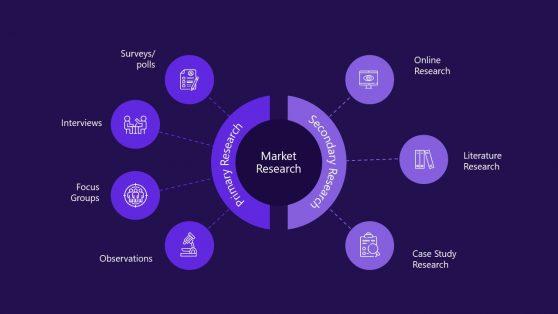
Market Research Diagram PowerPoint Template
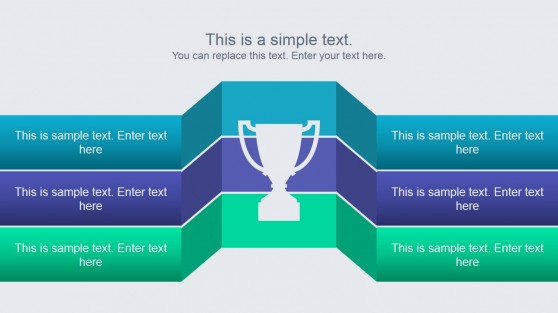
Animated Research PowerPoint Template
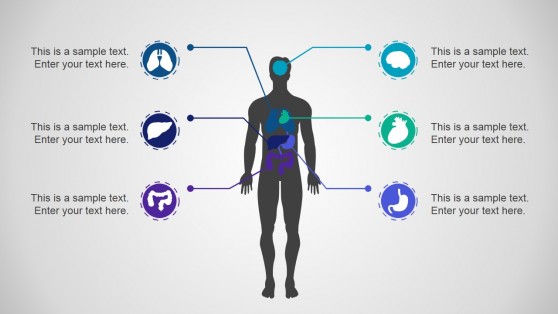
Medical Research PowerPoint Template
Latest templates.
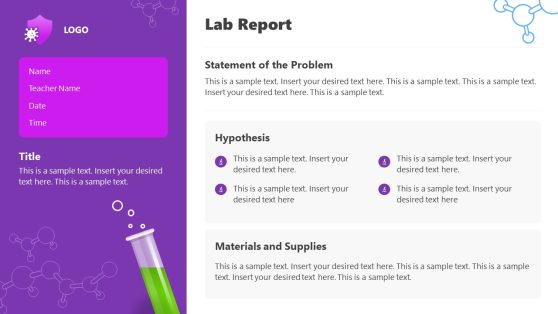
Lab Report PowerPoint Template

Research Paper Presentation Template

Neuroscience PowerPoint Template
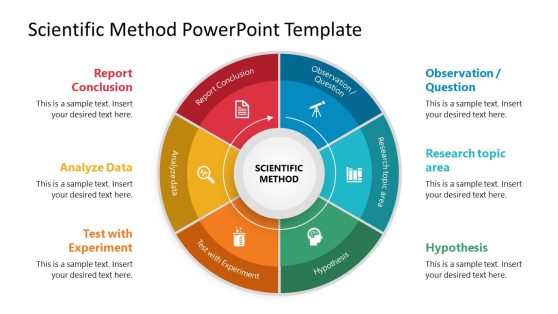
Scientific Method Diagram PowerPoint Template
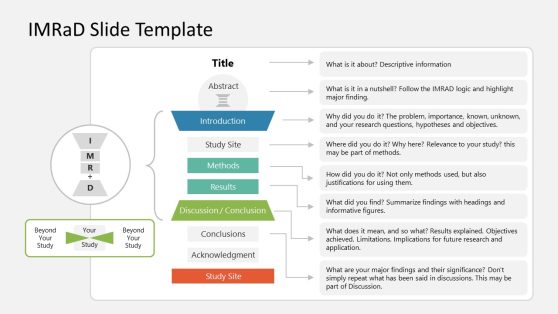
IMRaD PowerPoint Template
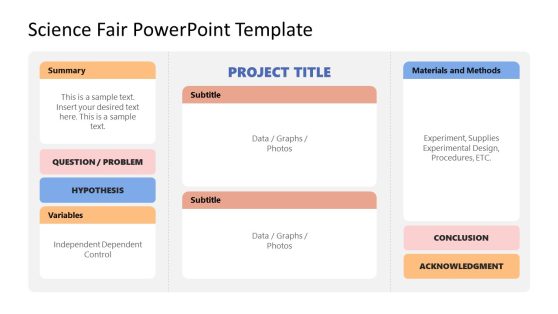
Science Fair PowerPoint Template
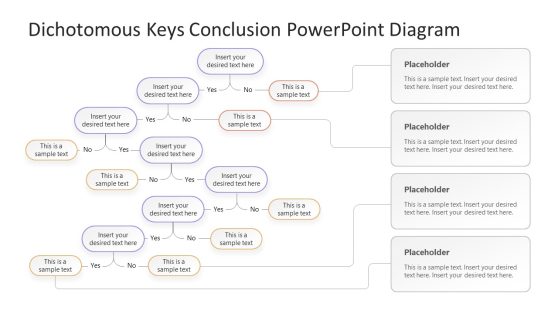
Dichotomous Keys Conclusion PowerPoint Diagram

Research Presentation PowerPoint Template
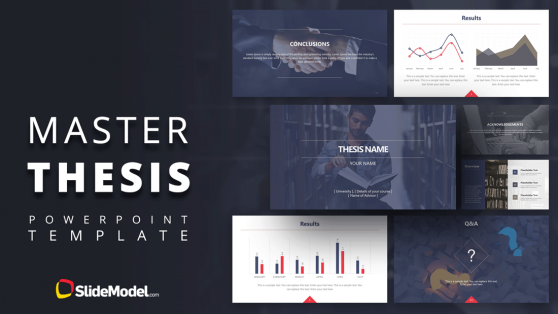
Master Thesis PowerPoint Template
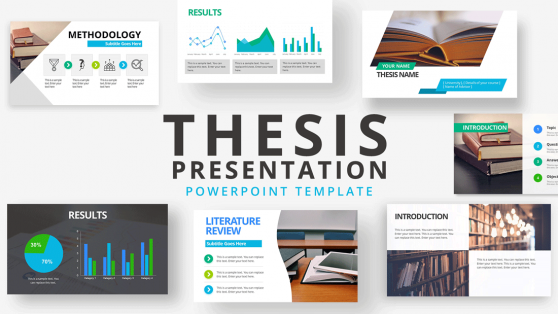
Thesis Presentation PowerPoint Template

Conference PowerPoint Template

PhD Dissertation PowerPoint Template
Research is a creative and systematic work to broaden one’s knowledge of a subject. It entails the objective collection, organization, and analysis of information to improve understanding of a topic or issue. A research project may be a continuation of previous work in the field. Using a well-crafted Research Template will help you save time and reduce stress while delivering your research to your target audience. You can use the Research Plan PowerPoint Template to reveal the research test processes or techniques. It could present business, marketing, and management research models in various industries.
Our Research Templates are designed to assist researchers in enhancing their research work by using 100% editable PowerPoint templates. These have been developed in formats that enable universal research use and acceptance. Our Research Templates are compatible with both MAC and Windows computers, as well as Google Slides, Keynote, Office 365, and Microsoft PowerPoint. All of our Research Templates are well-designed with shapes, icons, symbols, and other PowerPoint elements that will make your presentation visually appealing and allow you to communicate with your audience more effectively and quickly.
How Do You Write A Research Presentation?
A brief introduction, your hypotheses, a brief description of the methods, tables and/or graphs related to your findings, and an interpretation of your data should all be included in your presentation. The presentations should last no longer than 10 minutes. That’s not a lot of time. Allow approximately 1 minute per slide.
How to make a PowerPoint presentation from a research paper?
The simple step-by-step procedure for creating an incredible PowerPoint presentation from a research paper is outlined below:
- Introduction – 1 slide
- Hypotheses/ Research Questions – 1 slide
- Several kinds of literature – 1 slide
- Data Collection & Methods – 1 slide
- Data Presentation/ Discovery – 3-5 slides
- Conclusion – 1 slide
What Should A Research Presentation Template Include?
The presentation should include a summary of several hypotheses, a brief description of the methods, tables, and/or graphs related to various materials and methods, an interpretation of your data, a conclusion, and an acknowledgment.
How Many Slides Should A Research Presentation Have?
You should probably divide the presentation into sections based on the number of slides you believe is appropriate. Allow two to three minutes per slide, which means that for a 15-minute sensation, you should have no more than five to seven slides. Also, check out our gallery of research poster templates available for PowerPoint and Google Slides.
What is the purpose of a research presentation?
A research presentation can be used, among other things, to defend a dissertation, for an academic job interview, for a conference, or to request funding. The purpose of your presentation will determine the remainder of the procedure.
Crafting Engaging and Informative Experiences: How Our Research Paper PowerPoint Templates Stand Out
Designing a PowerPoint presentation from scratch can be a daunting task, but our ready-made Research PowerPoint Templates are here to make your life easier. In this section, we’ll delve into what sets our templates apart and how they can help you create engaging and informative research presentations.
Ready-Made Templates for Stress-Free Presentations
Research presentations require a careful balance of information and engagement. Our Research PowerPoint Templates are designed to take the stress out of the presentation design process. You don’t have to spend countless hours crafting slides from scratch. Instead, you can download our templates and focus on tailoring them to your unique presentation style.
Professional and Creative Design
One of the standout features of our templates is their professional and creative design. We understand that research presentations need to convey complex information in a visually appealing way. That’s why our templates come loaded with a variety of elements, including shapes, icons, colors, diagrams, images, charts, and graphs. These elements are thoughtfully integrated into the templates to help you illustrate your research work effectively.
Versatile Templates for All Types of Research
Whether you’re working on a thesis, conducting marketing analysis, or presenting scientific findings, we have templates that cater to various research domains. Our library includes templates such as the Research Plan PowerPoint Template, Market Research Diagram PowerPoint Template, Animated Research PowerPoint Template, Medical Research PowerPoint Template, and many more. Each template is designed to meet the specific needs of different research projects.
Compatibility and Editability
We understand that researchers use a variety of tools and platforms for presentations. That’s why our Research Templates are compatible with both MAC and Windows computers, as well as popular software like Google Slides, Keynote, Office 365, and Microsoft PowerPoint. You can easily edit and customize these templates to make them your own, saving you valuable time in the process.
Effective Communication Made Easy
Our templates aren’t just about aesthetics; they’re about enhancing your ability to communicate your research effectively. Whether you’re presenting to colleagues, peers, or potential funders, our templates provide you with a visual framework that ensures your message gets across clearly and concisely.
In summary, crafting engaging and informative research presentations has never been easier. Our Research PowerPoint Templates offer a hassle-free solution to transform your research findings into compelling visual narratives. With professionally designed elements and compatibility across various platforms, our templates are your secret weapon for successful research presentations. Download one today and see the difference for yourself.
Download Unlimited Content
Our annual unlimited plan let you download unlimited content from slidemodel. save hours of manual work and use awesome slide designs in your next presentation..
Top searches
Trending searches

teacher appreciation
11 templates

tropical rainforest
29 templates

46 templates

pediatrician
27 templates

spring season
34 templates

23 templates
Create your presentation
Writing tone, number of slides.

AI presentation maker
When lack of inspiration or time constraints are something you’re worried about, it’s a good idea to seek help. Slidesgo comes to the rescue with its latest functionality—the AI presentation maker! With a few clicks, you’ll have wonderful slideshows that suit your own needs . And it’s totally free!

Generate presentations in minutes
We humans make the world move, but we need to sleep, rest and so on. What if there were someone available 24/7 for you? It’s time to get out of your comfort zone and ask the AI presentation maker to give you a hand. The possibilities are endless : you choose the topic, the tone and the style, and the AI will do the rest. Now we’re talking!
Customize your AI-generated presentation online
Alright, your robotic pal has generated a presentation for you. But, for the time being, AIs can’t read minds, so it’s likely that you’ll want to modify the slides. Please do! We didn’t forget about those time constraints you’re facing, so thanks to the editing tools provided by one of our sister projects —shoutouts to Wepik — you can make changes on the fly without resorting to other programs or software. Add text, choose your own colors, rearrange elements, it’s up to you! Oh, and since we are a big family, you’ll be able to access many resources from big names, that is, Freepik and Flaticon . That means having a lot of images and icons at your disposal!

How does it work?
Think of your topic.
First things first, you’ll be talking about something in particular, right? A business meeting, a new medical breakthrough, the weather, your favorite songs, a basketball game, a pink elephant you saw last Sunday—you name it. Just type it out and let the AI know what the topic is.
Choose your preferred style and tone
They say that variety is the spice of life. That’s why we let you choose between different design styles, including doodle, simple, abstract, geometric, and elegant . What about the tone? Several of them: fun, creative, casual, professional, and formal. Each one will give you something unique, so which way of impressing your audience will it be this time? Mix and match!
Make any desired changes
You’ve got freshly generated slides. Oh, you wish they were in a different color? That text box would look better if it were placed on the right side? Run the online editor and use the tools to have the slides exactly your way.
Download the final result for free
Yes, just as envisioned those slides deserve to be on your storage device at once! You can export the presentation in .pdf format and download it for free . Can’t wait to show it to your best friend because you think they will love it? Generate a shareable link!
What is an AI-generated presentation?
It’s exactly “what it says on the cover”. AIs, or artificial intelligences, are in constant evolution, and they are now able to generate presentations in a short time, based on inputs from the user. This technology allows you to get a satisfactory presentation much faster by doing a big chunk of the work.
Can I customize the presentation generated by the AI?
Of course! That’s the point! Slidesgo is all for customization since day one, so you’ll be able to make any changes to presentations generated by the AI. We humans are irreplaceable, after all! Thanks to the online editor, you can do whatever modifications you may need, without having to install any software. Colors, text, images, icons, placement, the final decision concerning all of the elements is up to you.
Can I add my own images?
Absolutely. That’s a basic function, and we made sure to have it available. Would it make sense to have a portfolio template generated by an AI without a single picture of your own work? In any case, we also offer the possibility of asking the AI to generate images for you via prompts. Additionally, you can also check out the integrated gallery of images from Freepik and use them. If making an impression is your goal, you’ll have an easy time!
Is this new functionality free? As in “free of charge”? Do you mean it?
Yes, it is, and we mean it. We even asked our buddies at Wepik, who are the ones hosting this AI presentation maker, and they told us “yup, it’s on the house”.
Are there more presentation designs available?
From time to time, we’ll be adding more designs. The cool thing is that you’ll have at your disposal a lot of content from Freepik and Flaticon when using the AI presentation maker. Oh, and just as a reminder, if you feel like you want to do things yourself and don’t want to rely on an AI, you’re on Slidesgo, the leading website when it comes to presentation templates. We have thousands of them, and counting!.
How can I download my presentation?
The easiest way is to click on “Download” to get your presentation in .pdf format. But there are other options! You can click on “Present” to enter the presenter view and start presenting right away! There’s also the “Share” option, which gives you a shareable link. This way, any friend, relative, colleague—anyone, really—will be able to access your presentation in a moment.
Discover more content
This is just the beginning! Slidesgo has thousands of customizable templates for Google Slides and PowerPoint. Our designers have created them with much care and love, and the variety of topics, themes and styles is, how to put it, immense! We also have a blog, in which we post articles for those who want to find inspiration or need to learn a bit more about Google Slides or PowerPoint. Do you have kids? We’ve got a section dedicated to printable coloring pages! Have a look around and make the most of our site!
- IEEE Xplore Digital Library
- IEEE Standards
- IEEE Spectrum

- IEEE Brand Overview
- Frequently asked questions
- IEEE Master Brand and Logos
- Geo-unit & Section Resources
- IEEE Society Sub-Brand Resources
- IEEE Council Sub-Brand Resources
- Brand Identity Guidelines
- IEEE Style Guide and Requirements
- IEEE.org Content Review Guidelines
- Mobile/app and Responsive Design Guidelines
- Other Site Management Guidelines
- IEEE Website and Social Media Site Registration Form
- Social Media Overview
- Social Media Training Resources
- How to utilize collateral & templates
IEEE Corporate Presentation Templates
- Digital use collateral
- Print collateral and editable templates
- Promotional advertising collateral
- Website templates
- 140 years of IEEE—Marketing Toolkit
- Adapting Your Marketing Communications to the Environment Around You
- IEEE App Marketing Toolkit
- IEEE Collabratec Toolkit
- IEEE Day Toolkit
- IEEE Digital Marketing Campaign Toolkit
- IEEE Education Week Toolkit
- IEEE eLearning 50% Discount Toolkit
- IEEE Open Access Toolkit
- IEEE Periodical Journals Marketing Toolkit
- IEEE Publicity Toolkit
- IEEE Social Media and Communications Toolkit for Authors
- IEEE Social Media Toolkits
- IEEE Strategic Plan Toolkit
- IEEE Students Toolkit
- IEEE Volunteering Toolkit
- IEEE Your Professional Home Toolkit
- Promo Library
- IEEE branded virtual backgrounds for video conferencing tools
- IEEE Virtual UX Lab
- IEEE Brand Experience Bulletin
- Brand videos
- Digital Resources
- IEEE Experience Design Team Contact Form
- IEEE Brand Inquiries Form
- Frequently Asked Questions
- IEEE Experience Design Team Project Process
- Creative Portfolio
- Service level agreements
- Public visibility
- Print Collateral and Editable Templates
- IEEE Website Templates
- How to Utilize Collateral & Templates
- IEEE Website Templates Access Request Form
- Digital Use Collateral
- Promotional Advertising Collateral
Create new presentations and refresh existing ones by using the branded IEEE Corporate Presentation Templates. Templates are available in high resolution and basic formats and support fullscreen as well as widescreen display on Windows and Mac computers.
On this page:
IEEE Presentation Template Quick Start Guide
Primary presentation template - ieee blue, alternate color presentation templates.
- Additional Branded PowerPoint options
Report Templates
- NEW: IEEE Corporate PowerPoint Quick Start Guide
- PowerPoint options
Use the following basic versions of the IEEE presentation templates if you are working in areas with low internet bandwidth. Microsoft PowerPoint, Google Slides, and Keynote versions are available below.

IEEE Blue (Pantone 3015) - Microsoft PowerPoint Template (PPTX, 6.1 MB) IEEE Blue (Pantone 3015) - Google Slides Template IEEE Blue (Pantone 3015) - Keynote for Mac Template (7.9 MB)
These decks each contain a full set of slides in one color theme with coordinating imagery. Select IEEE Brand Blue or one of the 3 additional colors from the approved IEEE Brand Color Palette.

- Red (Pantone 200) - PowerPoint Template (PPTX, 12.4 MB)
- Red (Pantone 200) - Google Slides Template

- Cyan - PowerPoint Template (PPTX, 9 MB)
- Cyan - Google Slides Template

- Navy (Pantone 295) - PowerPoint Template (PPTX, 8.3 MB)
- Navy (Pantone 295) - Google Slides Template
Additional Branded PowerPoint Options
These decks each contain a full set of slides each with a unique design theme. These include a title slide, divider slide, and text slide options. Some options have placeholders for sub-brand logos.

Abstract Polygons (PPTX, 10 MB)

Global View (PPTX, 12.4 MB)

Brand Circuit (PPTX, 721 KB)

Event Series (PPTX, 57.2 MB)
If you have trouble downloading the files, please submit your request via the IEEE Experience Design Team Contact Form .

IEEE Report Template - Letter Sized (DOCX, 4.3 MB) IEEE Report Template - A4 Sized (DOCX, 3.3 MB )
Home | Sitemap | Contact | Accessibility | Nondiscrimination Policy | IEEE Ethics Reporting | IEEE Privacy Policy | Terms | Site Feedback
© Copyright 2024 IEEE – All rights reserved. A not-for-profit organization, IEEE is the world's largest technical professional organization dedicated to advancing technology for the benefit of humanity.

IMAGES
VIDEO
COMMENTS
Creating a PowerPoint presentation for a research paper involves several critical steps needed to convey your findings and engage your audience effectively, and these steps are as follows: Step 1. Understand your audience: Identify the audience for your presentation. Tailor your content and level of detail to match the audience's background ...
Here are some simple tips for creating an effective PowerPoint Presentation. Less is more: You want to give enough information to make your audience want to read your paper. So include details, but not too many, and avoid too many formulas and technical jargon. Clean and professional: Avoid excessive colors, distracting backgrounds, font ...
In the case of a research presentation, you want a formal and academic-sounding one. It should include: The full title of the report. The date of the report. The name of the researchers or department in charge of the report. The name of the organization for which the presentation is intended.
Theory vs. methods vs. data. In order of importance, write down all the points you want your viewer to understand. Focus your presentation on the first three points. Include sections similar to a typical journal article. SUMMARIZE! Aim for approximately 1 minute per slide. Usually 10-15 slides total.
Journal of The Association of Physicians of India V ol. 65 September 2017. 72. Presenting Research Paper: Learning the steps. Sandeep B Bavdekar 1, Varun Anand2, Shruti Vyas3. Professor and Head ...
Demonstrate your research findings in a visually appealing presentation using our Free Research Paper PowerPoint Template. A research paper is a piece of academic writing that provides deep insights, analysis, interpretation, arguments, and results based on independent research. There are various types of research papers, and they can be related to any domain, such as biological sciences ...
Related Articles. This guide provides a 4-step process for making a good scientific presentation: outlining the scientific narrative, preparing slide outlines, constructing slides, and practicing the talk. We give advice on how to make effective slides, including tips for text, graphics, and equations, and how to use rehearsals of your talk to ...
The Research Paper Presentation Template starts with a title slide displaying the topic of the research presentation. Next, there is an agenda slide and a slide showing the examination's background. In the problem statement slide, presenters can display the scope of the study, its relevance, and the associated research questions.
Turning a research paper into a visual presentation is difficult; there are pitfalls, and navigating the path to a brief, informative presentation takes time and practice. As a TA for GEO/WRI 201: Methods in Data Analysis & Scientific Writing this past fall, I saw how this process works from an instructor's standpoint. I've presented my own ...
Visualize Data Instead of Writing Them. When adding facts and figures to your research presentation, harness the power of data visualization. Add interactive charts and graphs to take out most of the text. Text with visuals causes a faster and stronger reaction than words alone, making your presentation more memorable.
Free Google Slides theme, PowerPoint template, and Canva presentation template. Have you seen these slides? They are perfect for presenting your research paper! First of all, because we have included all the necessary sections of this type of work, such as hypothesis, objectives, methodology, analysis and the conclusions of the paper.
A good oral presentation is focused, concise, and interesting in order to trigger a discussion. Be well prepared; write a detailed outline. Introduce the subject. Talk about the sources and the method. Indicate if there are conflicting views about the subject (conflicting views trigger discussion). Make a statement about your new results (if ...
Tips for Research Paper Presentations. There should be 5*5 rules in each slide. I.e. there are five words in one sentence and there should be five lines on one slide. Data should be in the form of small key points or bullets. Data should not be in paragraph form on the slide. It should be precise.
Science & Research Presentation PowerPoint Template. This PowerPoint template is a perfect choice for preparing a research presentation to share your scientific findings and reports. The template has 30 unique slides with unlimited color options. There are a few infographics included in the slideshow as well.
Know if you must include sources or visuals. 2. Know your audience. If you're giving a presentation to your classmates, you probably have a rough idea of their knowledge on the topic. But for virtually every other circumstance, you may be in the dark. Either way, cater your paper to make zero assumptions.
This research paper presentation template uses visual aids, such as pictures and icons to help you communicate clearly and effectively with your audience. You can use this template to present research proposals and papers to faculty staff or the general public. It can be an ideal addition to your funding request. Present your research paper ...
Download the "Cellular Respiration and its Implications Breakthrough" presentation for PowerPoint or Google Slides.Treating diseases involves a lot of prior research and clinical trials. But whenever there's a new discovery, a revolutionary finding that opens the door to new treatments, vaccines or ways to prevent illnesses, it's great news.
Creating environmentally friendly presentations demonstrates your commitment to sustainability and responsible practices. Designing Eco-Friendly Slides. Minimize the use of resources by designing slides with efficient layouts, avoiding unnecessary graphics or animations, and using eco-friendly color schemes. Reducing Paper and Material Waste
Free Paper Slide Templates for an Artistic Slideshow. Organize and present your ideas with this paper PowerPoint template. Whether you're a student, teacher, or business professional, these templates are perfect for anyone who wants to make their presentation look professional and organized. With a range of customizable slides, you can easily ...
Download the "Design Inspiration Scrapbook" presentation for PowerPoint or Google Slides and start impressing your audience with a creative and original design. Slidesgo templates like this one here offer the possibility to convey a concept, idea or topic in a clear, concise and visual way, by using different graphic resources.... Multi-purpose.
Our Research PowerPoint Templates offer a hassle-free solution to transform your research findings into compelling visual narratives. With professionally designed elements and compatibility across various platforms, our templates are your secret weapon for successful research presentations. Download one today and see the difference for yourself ...
AI presentation maker. When lack of inspiration or time constraints are something you're worried about, it's a good idea to seek help. Slidesgo comes to the rescue with its latest functionality—the AI presentation maker! With a few clicks, you'll have wonderful slideshows that suit your own needs. And it's totally free!
These decks each contain a full set of slides in one color theme with coordinating imagery. Select IEEE Brand Blue or one of the 3 additional colors from the approved IEEE Brand Color Palette. Red (Pantone 200) - PowerPoint Template (PPTX, 12.4 MB) Red (Pantone 200) - Google Slides Template. Cyan - PowerPoint Template (PPTX, 9 MB)